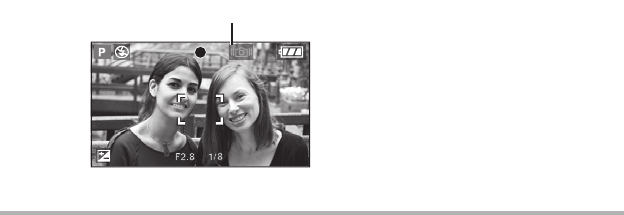
Basic
29
VQT0Y44
n Focusing
• The focus range is 50 cm (1.64 feet) to Z
(Wide), 1.0 m (3.28 feet) to Z (Tele). Use
macro mode when recording close-up
pictures. (P59)
•
If the distance between the camera and the
subject is beyond the focus range of the
camera, the picture may not be properly
focused even if the focus indication lights.
• In the following cases, the camera cannot
focus on subjects properly.
–When including both near and distant
subjects in a scene.
–When there is dirt or dust on the glass
between the lens and the subject.
–When there are illuminated or glittering
objects around the subject.
–When taking a picture in a dark place.
–When the subject is moving fast.
–When the scene has low contrast.
–When jitter occurs.
–When recording a very bright subject.
We recommend taking pictures using
prefocus (P58) and AF/AE lock (P61). In
dark places, the AF assist lamp (P90)
may turn on to focus on the subject.
• Even if the focus indication appears and
the subject is focused, it is canceled when
you release the shutter button. Press the
shutter button halfway again.
n Preventing jitter (camera shake)
• Be careful of jittering when pressing the
shutter button.
• The jitter alert
1 appears when the
shutter speed is slow and the chances of
blurring are greater.
• When the jitter alert appears, take special
care with the shooting methods described
on P28, or use a tripod for best results. By
combining the use of a tripod with the
self-timer (P47), you can avoid blurring
caused when you press the shutter
button.
• Shutter speed will be slower particularly in
the following cases. Keep the camera still
from the moment the shutter button is
pressed until the picture appears on the
screen. We recommend using a tripod.
–Slow sync./Red-eye reduction [u]
(P43)
–[NIGHT PORTRAIT] (P64), [NIGHT
SCENERY] (P64), [PARTY] (P65),
[CANDLE LIGHT] (P66), [FIREWORKS]
(P66), [STARRY SKY] (P67) in scene
mode
–When you have reduced shutter speed
(P53, 54)
n Exposure
• If you press the shutter button halfway
when the exposure is not adequate, the
indication of the aperture value and the
shutter speed turns red. (However, the
aperture value and the shutter speed do
not turn red when the flash is activated.)
• The brightness of the screen may differ
from the brightness of the recorded
pictures especially when recording in low
light conditions.
• When most of the subjects in the screen
are bright (e.g. blue sky on a clear day,
snowy field, etc.), the recorded pictures
may become dark. In this case,
compensate the exposure value on the
camera. (P48)
1


















